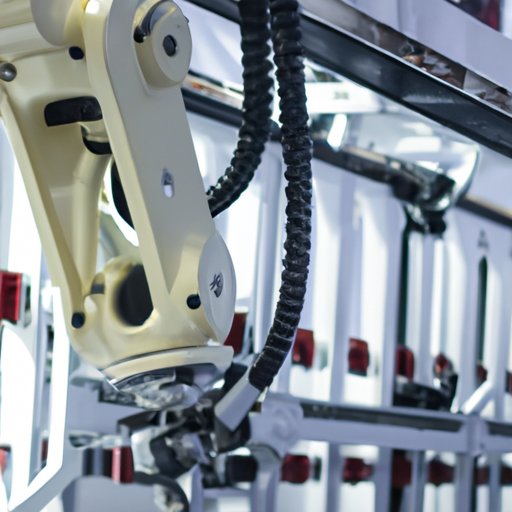Introduction
Robotics is a field of engineering that focuses on the design and manufacture of robots. A robot is an artificially intelligent machine that is capable of performing physical tasks autonomously or with guidance. In recent years, robots have become increasingly prevalent in many aspects of our lives, both in the workplace and in everyday life. This article will explore what robots do, how they are changing the workplace, their impact on everyday life, and the possibilities for their future development.
How Robotics is Changing the Workplace
Robots are becoming increasingly widespread in the workplace. They are being used to automate a variety of tasks, from manufacturing to logistics, resulting in increased efficiency and productivity. The use of robotics also has the potential to reduce costs, as robots require less maintenance and labor than traditional methods. Additionally, robots can be programmed to work around the clock, allowing for longer production cycles and faster turnaround times.
Robots are capable of performing a wide range of tasks. For example, industrial robots are often used for welding, painting, and assembling parts. Logistics robots are used to transport materials and goods within warehouses and factories. Service robots can be used for cleaning and maintaining facilities, as well as providing customer service. Finally, medical robots can be used for surgical procedures and other medical treatments.

Impact of Robotics on Everyday Life
Robotics is also having an impact on everyday life. Automation of household chores such as vacuuming, cleaning, and lawn care is becoming increasingly common. Additionally, robots are being used to assist with elderly care and in-home healthcare. Robotics is also being used in education, providing students with access to interactive learning experiences.
Robots are also being used in healthcare. Robots can be used to perform surgery, administer medication, and provide assistance to medical personnel. Additionally, robots are being used to monitor patients and collect data, which can then be used to improve patient outcomes. Finally, robots are being used to diagnose and treat illnesses, as well as to provide personalized medical advice.

A Look at the Future of Robotics
As robotics technology continues to advance, there are a number of possibilities for further development. Autonomous vehicles, such as self-driving cars, could revolutionize transportation. Additionally, robots could be used for space exploration and in search and rescue operations. Artificial intelligence is also likely to play an increasingly important role, allowing robots to become more autonomous and adaptable.
However, there are also potential challenges and limitations to consider. For example, robots may not always be able to accurately interpret their environment and may need to be supervised. Additionally, ethical considerations must be taken into account when designing and deploying robots, as they can potentially have a significant impact on society.
Conclusion
Robotics is becoming increasingly prevalent in the workplace and everyday life. Robots are being used to automate a variety of tasks, resulting in increased efficiency and productivity. Additionally, robots are being used to assist with elderly care, healthcare, and education. As robotics technology advances, there are a number of possibilities for further development, although potential challenges and limitations must also be taken into account.
(Note: Is this article not meeting your expectations? Do you have knowledge or insights to share? Unlock new opportunities and expand your reach by joining our authors team. Click Registration to join us and share your expertise with our readers.)
